The 9 Best Vibe Coding Tools (We Tested Them Ourselves)
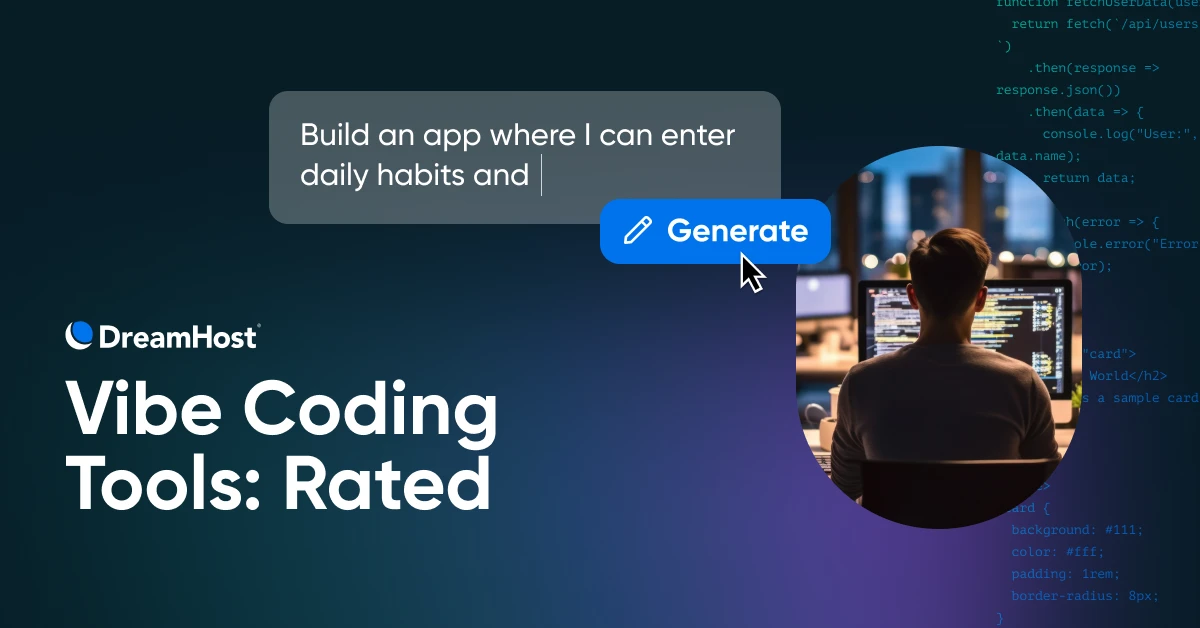
Vibe coding sounds pretty cool.
Not the name. That’s a bit weird, to be honest. But we ♥ the idea.
Being able to describe an app and watch AI write the code is just…monumentally exciting.
The tough part is knowing where to start. Which apps are the easiest to use? Which ones will actually build something useful? And which ones are going to delete your entire codebase on a whim?
These are all fair questions. And we wanted to know the answers. That’s why we spent the past week putting the key contenders through their paces.
Stick with us for the next few minutes to discover what we built, how we did it, and which apps came out on top.
Comparing vibe coding tools can be a challenge, because they come in many flavors:
- IDE plugins: These tools act as a bridge between AI models (like Claude and ChatGPT) and your IDE workflow.
- IDE forks: These apps replace your existing IDE, with AI features built in. Most try to get you on a subscription.
- CLI-based tools: Happy to work in the command line? These tools are made for this environment.
- Web-based platforms: User-friendly web apps that let you create software right in your browser.
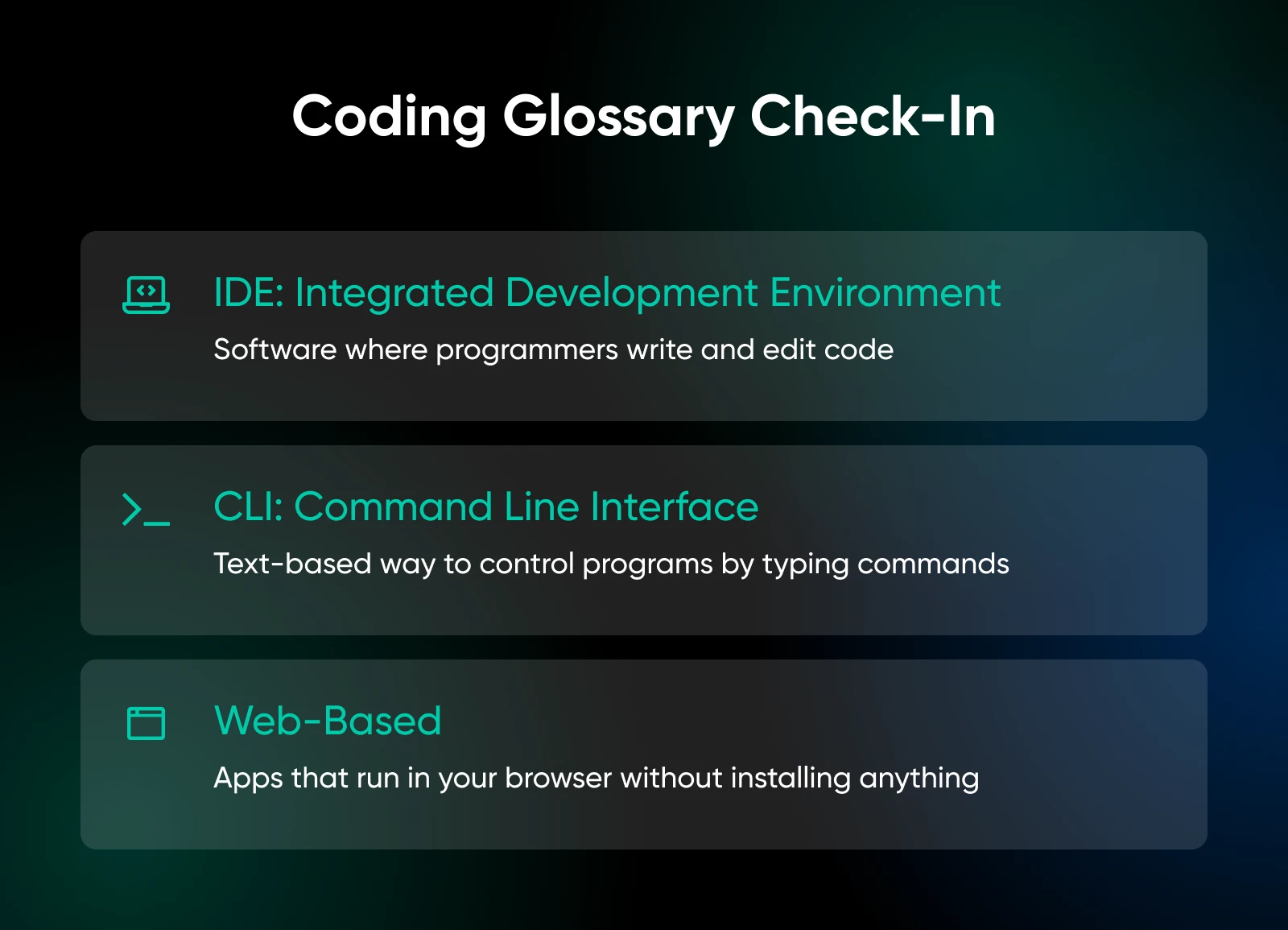
So many choices. But don’t worry, we’re going to make some sense of this AI tasting board.
The DreamHost Testing Rubric
To make it fair, we’ve created our own scoring system. It goes something like this:
- First pass execution (0–10): How well does the platform translate your initial prompt into working code?
- Error recovery (0–10): How effectively does the platform handle bugs and errors?
- Iteration capability (0–10): How well does the platform handle follow-up changes and adjustments?
- User experience (0–10): How intuitive is the platform, both for developers and for non-technical people?
- Deployment (0–10): Can you deploy directly from the platform, and is the generated code ready to ship?
- Prompting efficiency (0–10): How many prompts are required to achieve the desired outcome? And how deep do those prompts need to be?
- Value for money (0–10): Free tier limitations and restrictions, pricing model fairness, and overall bang for your buck.
And how are we qualified to score this contest?
Well, DreamHost provides hosting for many top apps, websites, and agencies. We know good code when we see it.
Check out the results under each tool to get the at-a-glance verdict.
IDE Plugins: Add Vibe Coding to Your Normal Workflow
If you’re technical enough to know what an IDE is, you might want to start vibe coding with a plugin. These solutions are fast, flexible, and fairly low-cost.
The only downsides: you need to configure (and pay for) your own API key, and most plugins are made for VSCode. If you use a different IDE, you might be out of luck.
1. Cline (VSCode/Cursor /Windsurf Extension)
Testing Score: 59.5/70
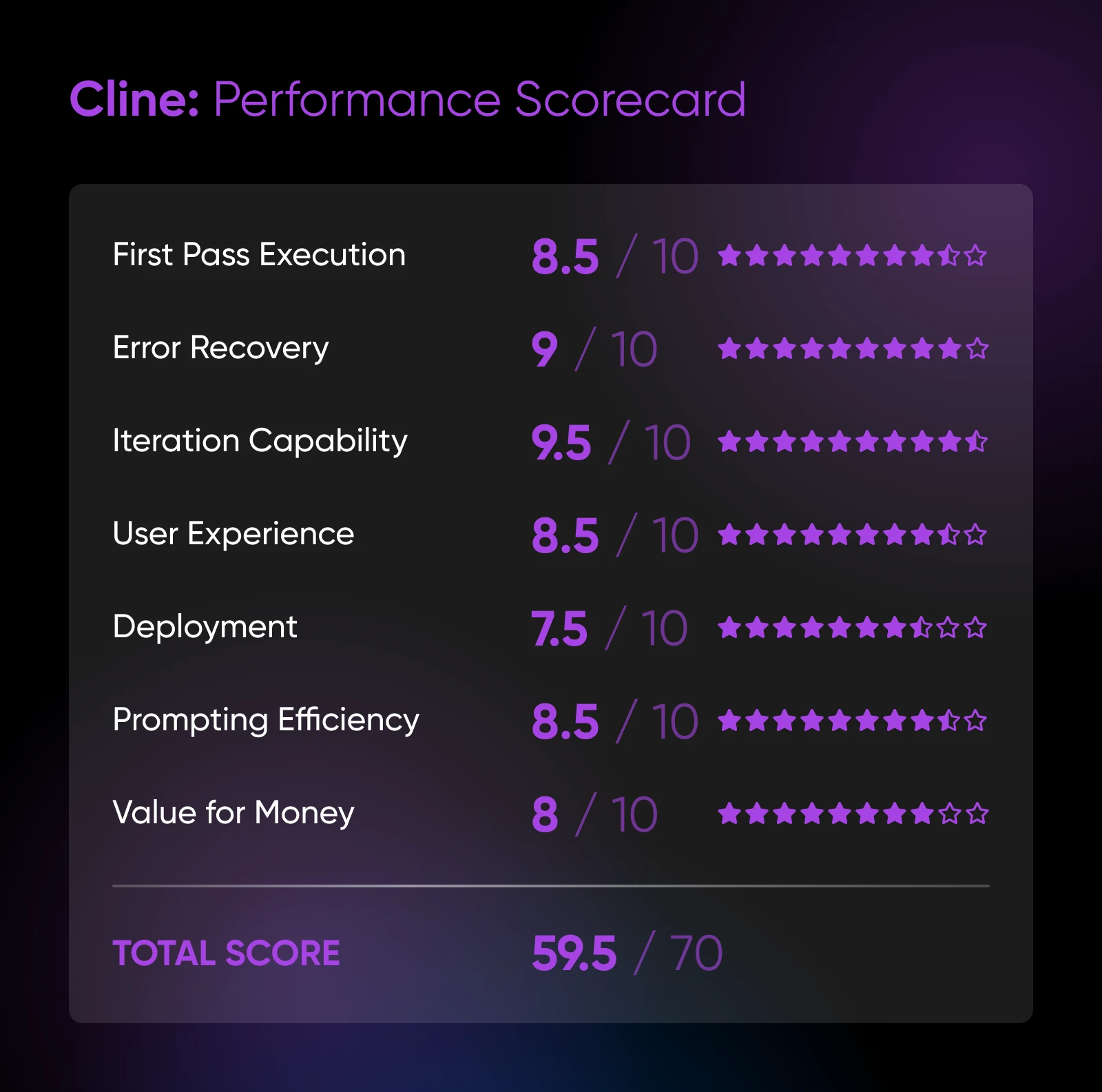
Cline is like the perfect intern: it always makes a plan, asks smart questions, and works hard without rewriting your entire repository.
In testing, Cline performed respectably on the first pass. We had it build an invoicing system; the plugin delivered clean code with no fuss (thanks in part to Claude running under the hood).
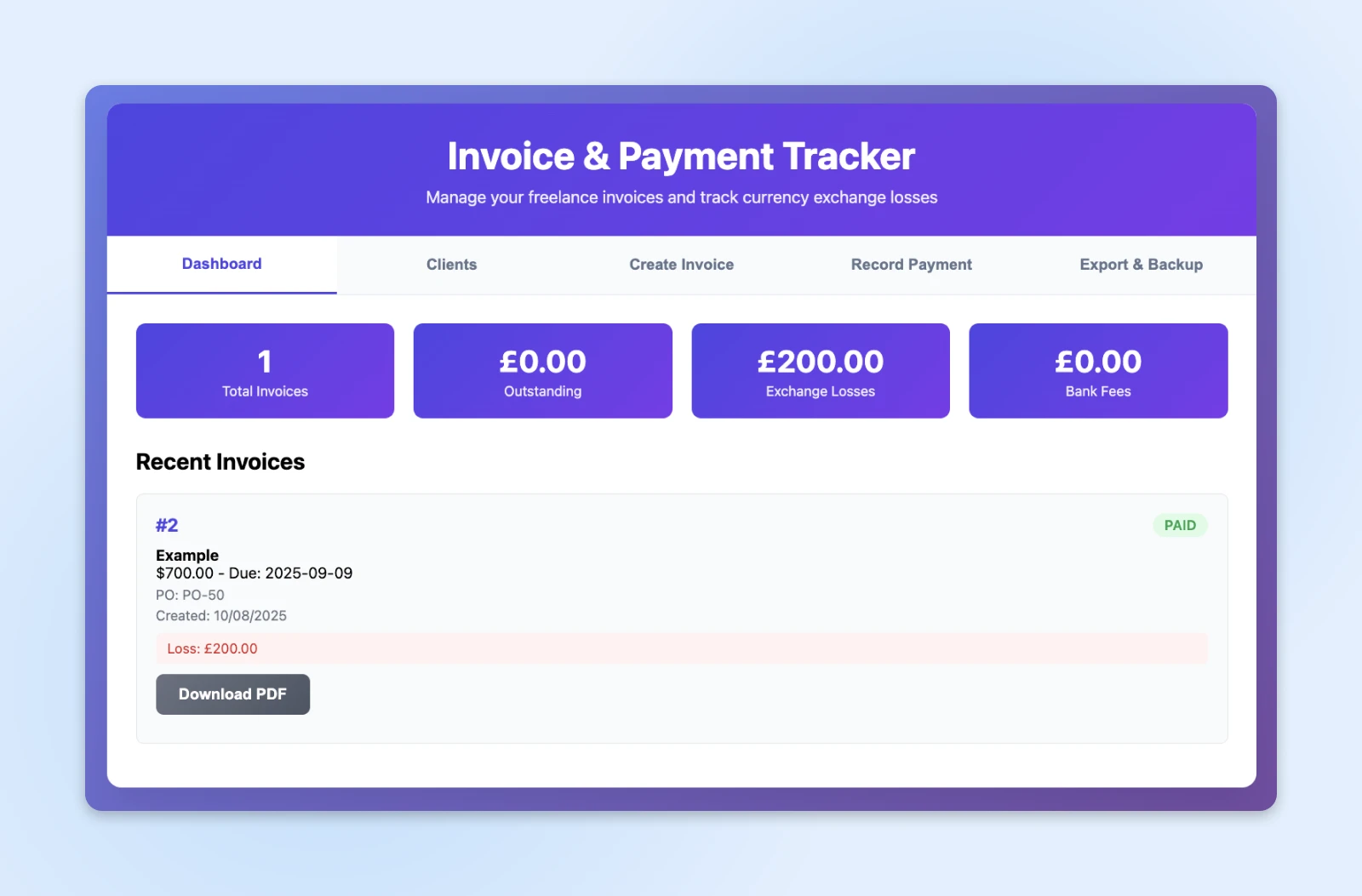
But the real strong point of this plugin is iteration. Cline’s strategic approach helps it tackle errors logically.
Enable autonomous mode, and the plugin can work in the background while you do other things. Just make sure to check in once in a while, or you’ll burn through a hell of a lot of AI credits.
Pros:
- Strong planning, and asks clarifying questions.
- Supports multiple AI providers.
- Autonomous mode can handle complex, multi-file tasks.
Cons:
- Can rack up API costs quickly.
- Sometimes guilty of over-engineering.
- Occasional lag with large codebases (>10,000 files).
Pricing: Free; you just pay for API usage.
2. Roo Code (VSCode Extension)
Testing Score: 57/70
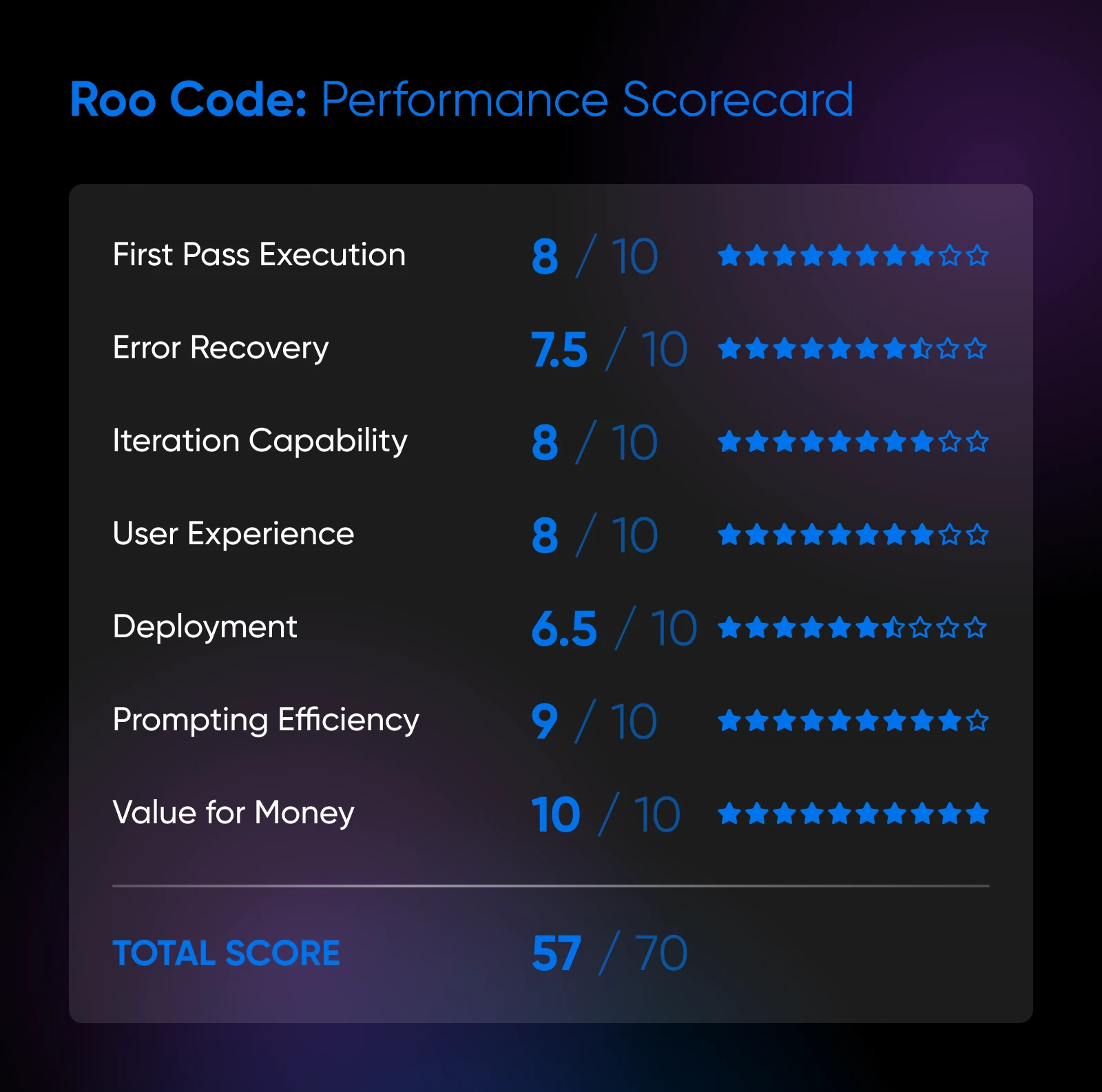
There’s nothing very glamorous about Roo Code. It’s an open-source extension that makes no outlandish promises. But boy, it does the boring stuff well.
Roo Code is particularly good at handling projects that require multiple files. The extension tracks context well, and it offers several specialized modes. It’s super customizable, too.
The quality of the code you receive largely depends on what you’re trying to achieve.
If you’re working with one or two popular languages, Roo Code will excel.
Need your agent to think outside the box and work within frameworks? Cline feels slightly more agile.
But overall, there’s not much separating these two (entirely free) extensions.
Pros:
- Excellent project-wide context awareness.
- Loads of customization options.
- Fast response times, even with complex queries.
Cons:
- Sometimes overeager to refactor if your prompts are broad.
- Error explanations are concise but not always root-cause-first.
- The DIY deploy path is hard for non-technical users.
Pricing: Free; you pay for API usage.
3. Kilo Code (VSCode/Cursor /JetBrains Extension)
Testing Score: 56/70
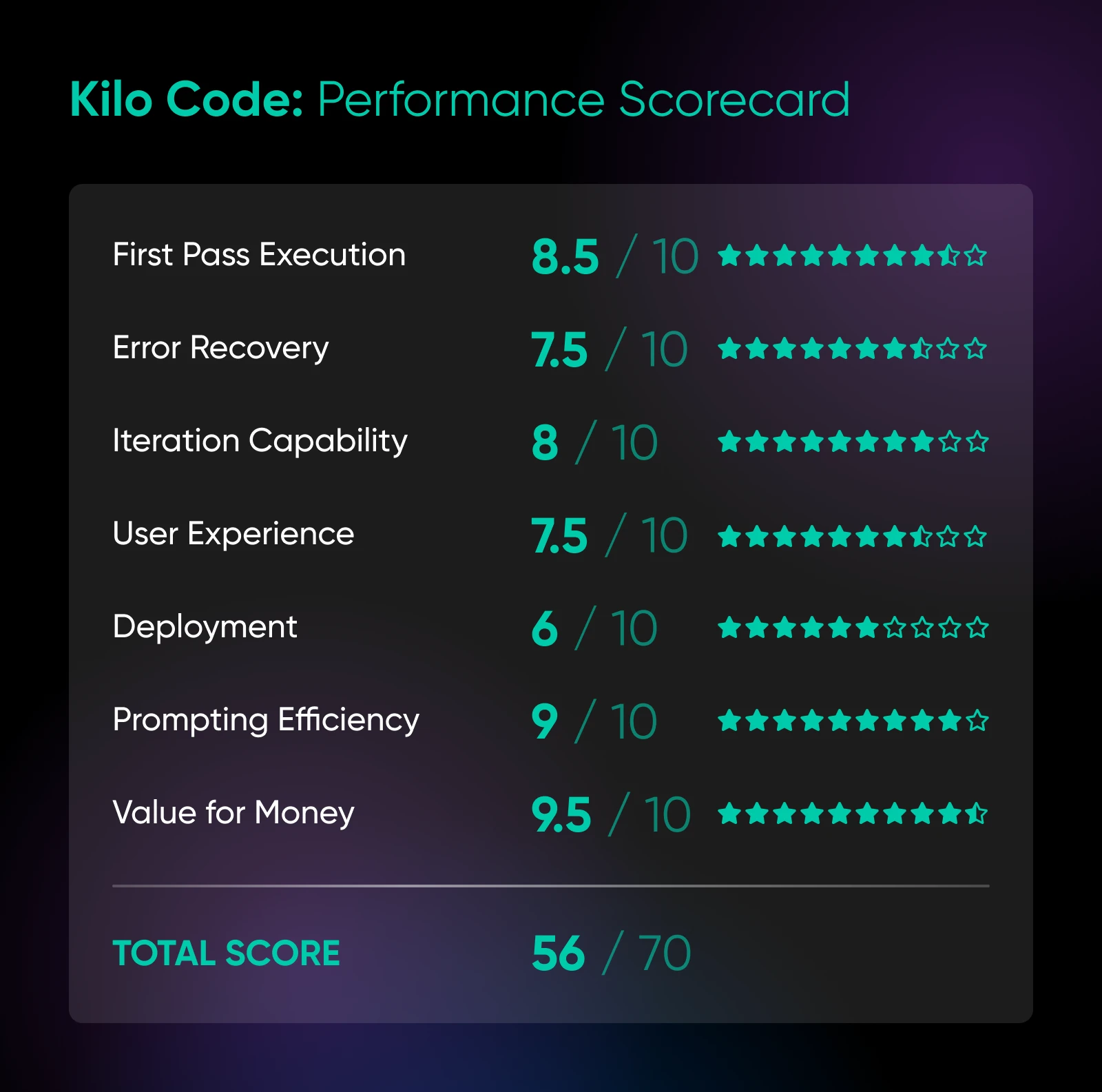
Kilo Code is essentially the lovechild of Cline and Roo Code.
It’s actually a direct fork of Roo Code — so you’ll find most of the same functionality here. But the developers have built Cline-like features on top, including simple setup and auto-acceptance.
In action, Kilo Code feels slightly rougher around the edges than Cline. But that’s to be expected, given the app is only months old.
And the extension smashed our one-shot test, creating a fully functional blog-to-tweet converter in seconds, using the free credits that Kilo offers to new users. Impressive stuff.
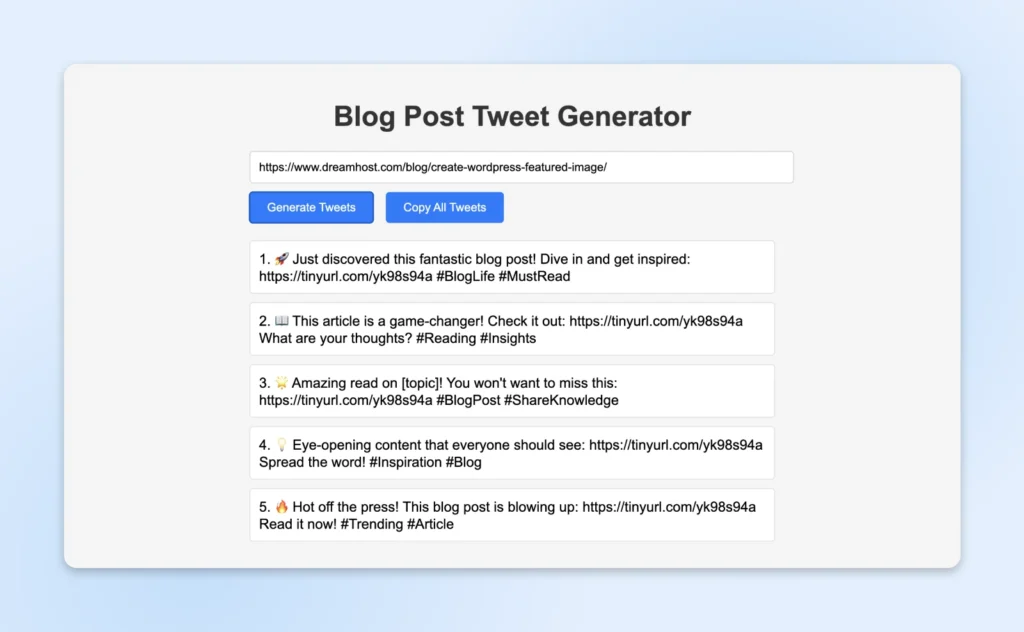
Pros:
- The feature list offers the best of both worlds.
- Great for scoped edits and UI polish.
- Low learning curve; stays out of your way.
Cons:
- Still feels slightly beta-ish.
- Not the smoothest setup.
- Deployment is very DIY.
Pricing: Free for individuals; team collaboration features from $29/user/month.
IDE Forks: Environments Made for Vibe Coding
Why mess around with plugins when you can just grab a free IDE with AI built in?
That would be the pitch for IDE forks. And plenty of people seem to be buying.
The two tools in this section have 1.8 million users between them. (For context, DreamHost has 400,000 customers. Still not bad if you ask us).
Let’s see what the fuss is all about.
4. Cursor
Testing Score: 57.5/70
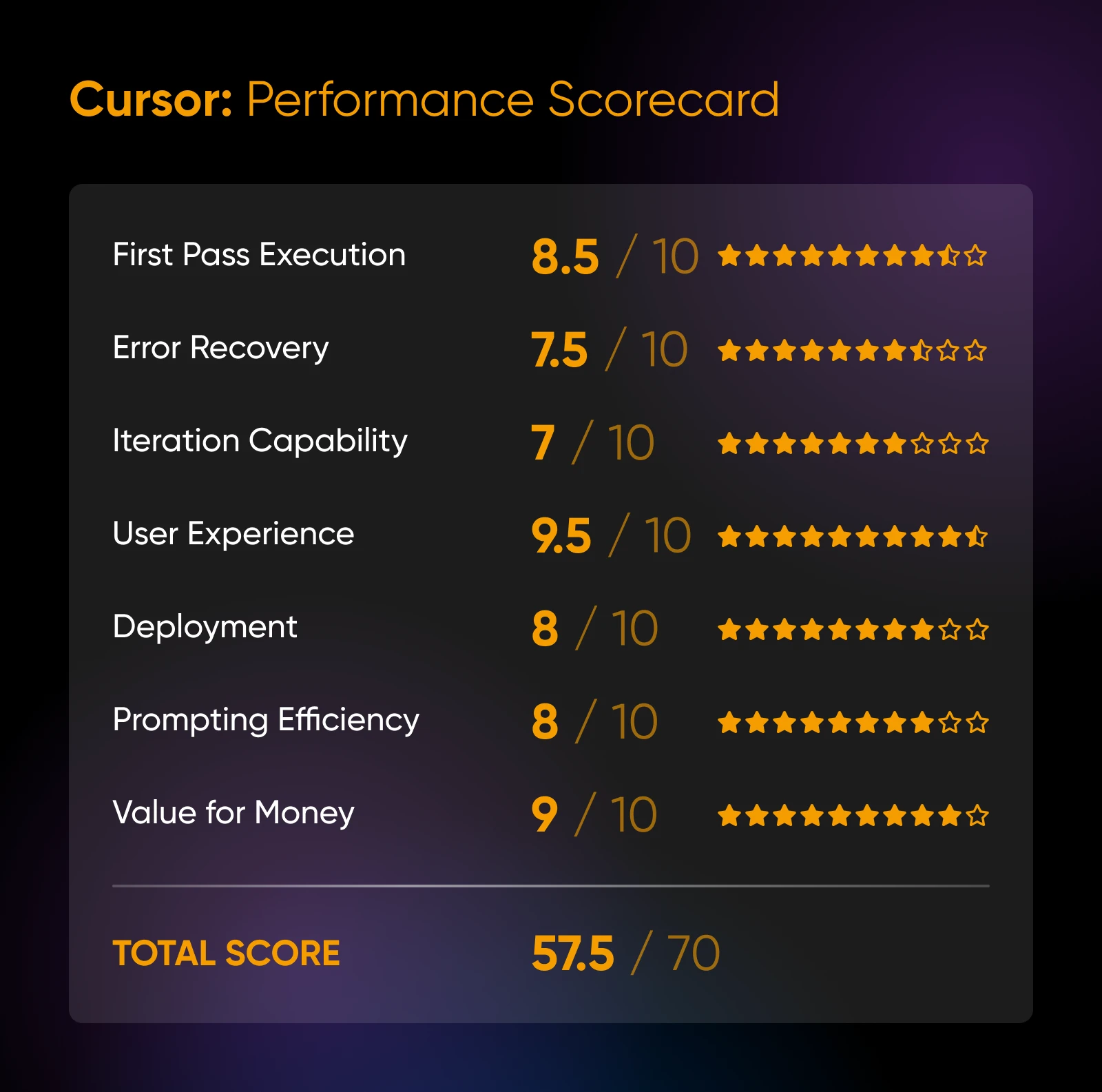
The OG of vibe coding. Cursor is probably the most popular AI-powered coding tool right now, and for good reason.
This IDE makes it super easy to start building apps. You don’t need an API key. Just install the desktop app and start making requests.
On the free plan, you get a limited number of free requests on slightly deprecated models (like Claude Sonnet 3.5). If you want more, paid plans start at $20/month.
For that price, you get way more requests than you would with API pricing. And the app is super easy to use.
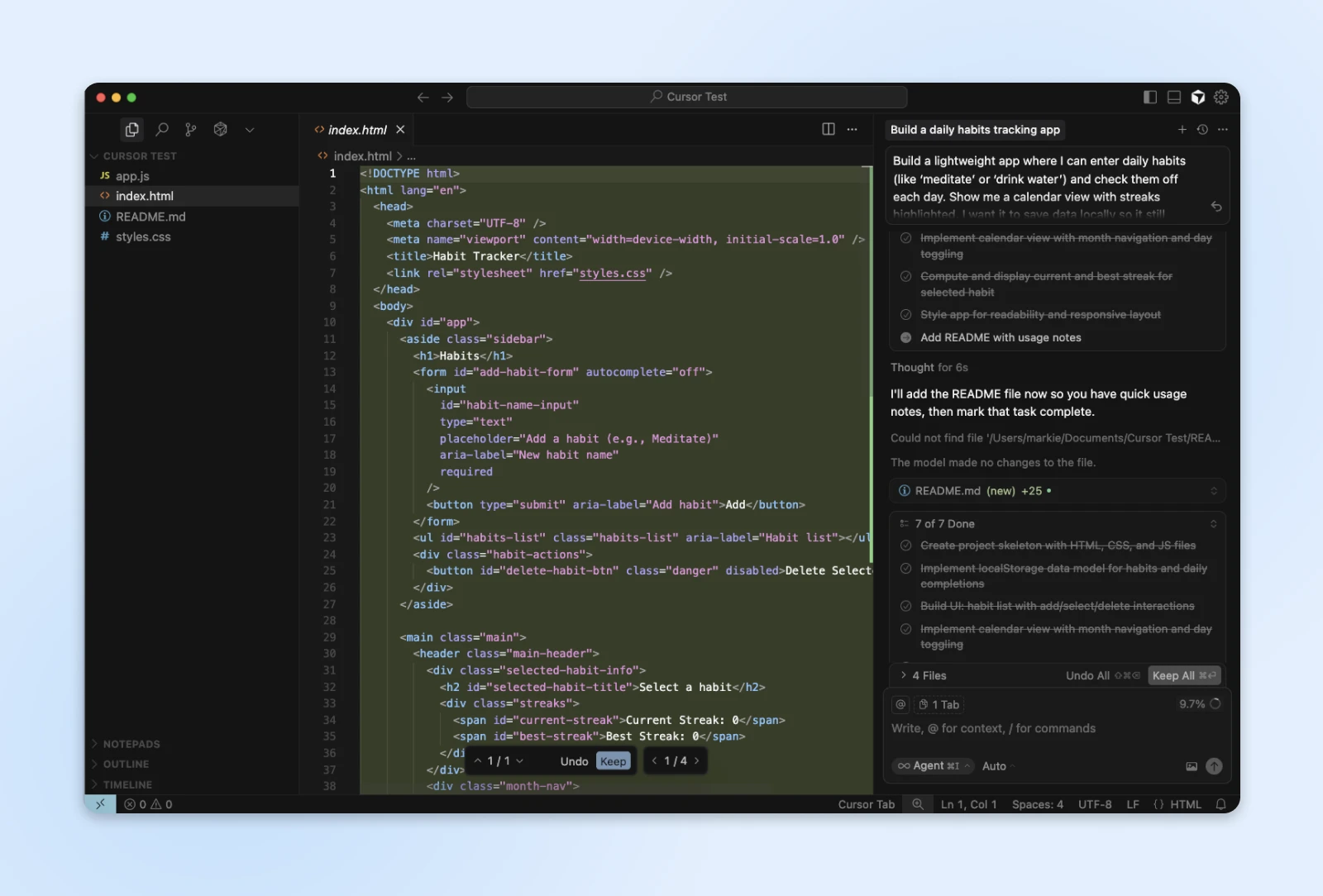
The major drawback is that Cursor isn’t quite as smart as BYOK (bring your own key) tools like Cline.
In testing, it handled a simple habit tracker in one shot — but the app sometimes needs help to stay on track during long vibe coding sessions.
Pros:
- Great interface, with access to AI for inline edits.
- Strong repo-wide changes with minimal regression.
- Fast and cheap.
Cons:
- Requires a subscription to access frontier models.
- Long sessions benefit from a manual recap to avoid drift.
- Heavy users will have to upgrade to the huge $200/month plan.
Pricing: Free to try with limited features; paid plans from $20/month.
5. Windsurf
Testing Score: 56.5/70
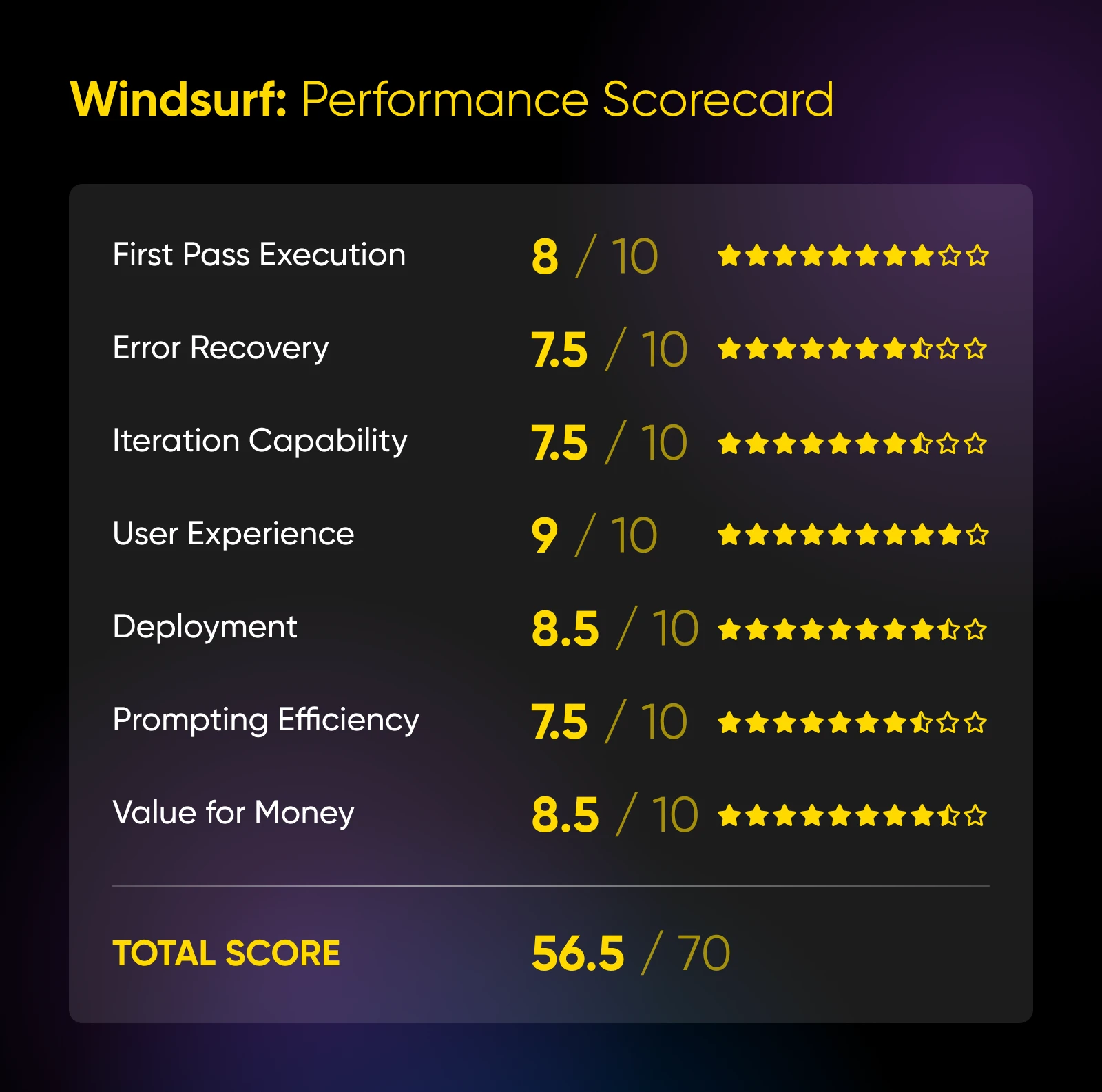
Windsurf is Cursor’s cheeky younger sibling. It’s not quite as mature or developed, but there’s plenty to like.
One big point of difference is access to models. Windsurf offers free access to the in-house SWE-1, which isn’t bad. But you’ll either need to bring your own keys or subscribe to a paid plan if you want anything from Claude, OpenAI, or Gemini.
Aside from this (fairly large) hiccup, Windsurf is very user-friendly. The app automatically scans existing codebases and tags all the key ingredients, meaning you can get to work faster. It even learns your coding style over time.
We also like the “App Deploys” feature, which lets you deploy web applications directly via Cascade. That’s a big plus for the non-techy people.
Pros:
- Speedy, even with large codebases.
- Easy to use for non-developers.
- Learns what you like.
Cons:
- Outputs can get a little wordy.
- Occasional hesitation if you’re not specific with prompts.
- Plans aren’t overly generous with credits for top models.
Pricing: Free to try; paid plans from $15/user/month.
For the average computer user, the command line feels dangerous. Type the wrong thing and you could easily delete your computer…or something.
But for seasoned developers, the command line is quite simply the most efficient tool for getting things done.
And that’s why some AI coding tools are made for this environment. Here are the highlights:
6. Claude Code
Testing Score: 59.5/70
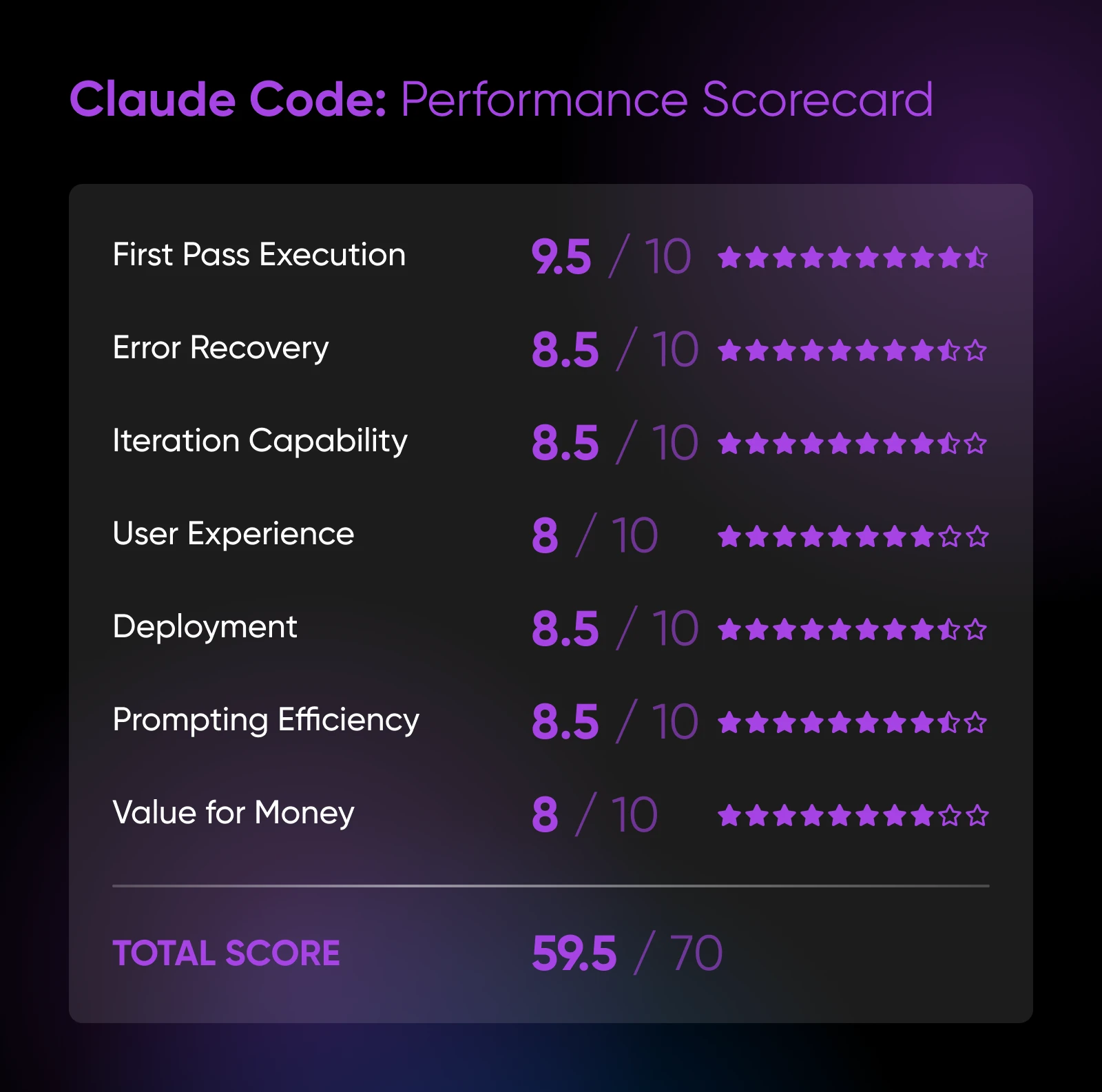
Say hello to the GOAT of reasoning. Holy cow, this thing is smart.
Whether you’re building a game of tic-tac-toe in Python, or creating an interactive galaxy in Three.js using star catalog data found in a JSON file — yes, we tried that — Claude Code outputs great code. It’s speedy, too.
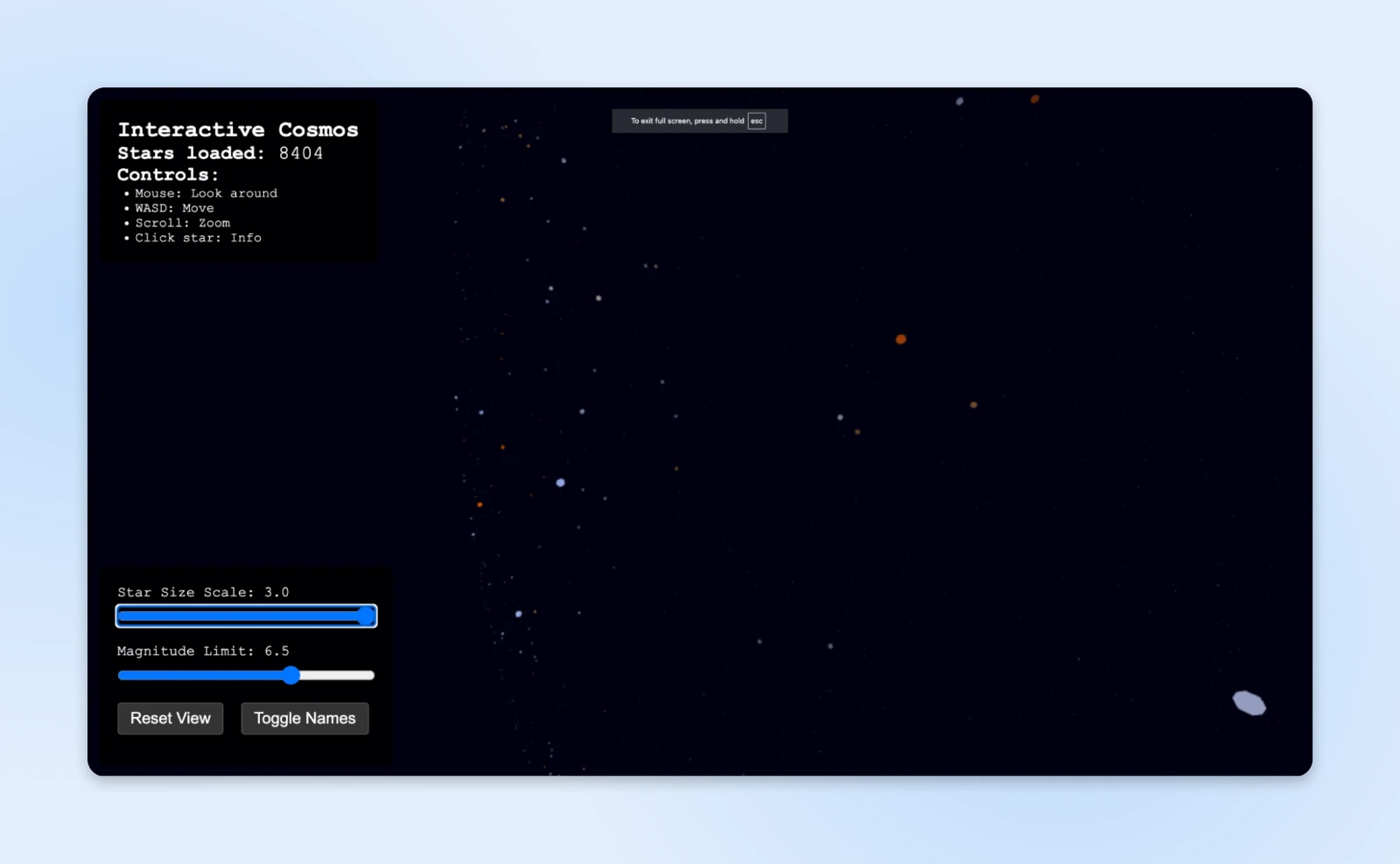
Claude Code works equally well on existing code bases, and the fact that you’re tapping directly into the shell means you can even use it for “vibe scripting”…if that’s a thing.
So, why isn’t this tool top of the pile? The main limitation is the lack of project-wide context. Unlike IDE-based solutions, Claude Code works best with focused, single-file tasks (although you can use it in your favorite IDE).
Pros:
- Exceptional natural language understanding.
- Works seamlessly over SSH.
- BYOK or get a massively generous subscription.
Cons:
- Limited to single-file context.
- No visual feedback or preview.
- Requires Anthropic API key configuration.
Pricing: Pay as you go via credits API, or from $200/month on the Max subscription.
7. OpenCode
Testing Score: 53/70
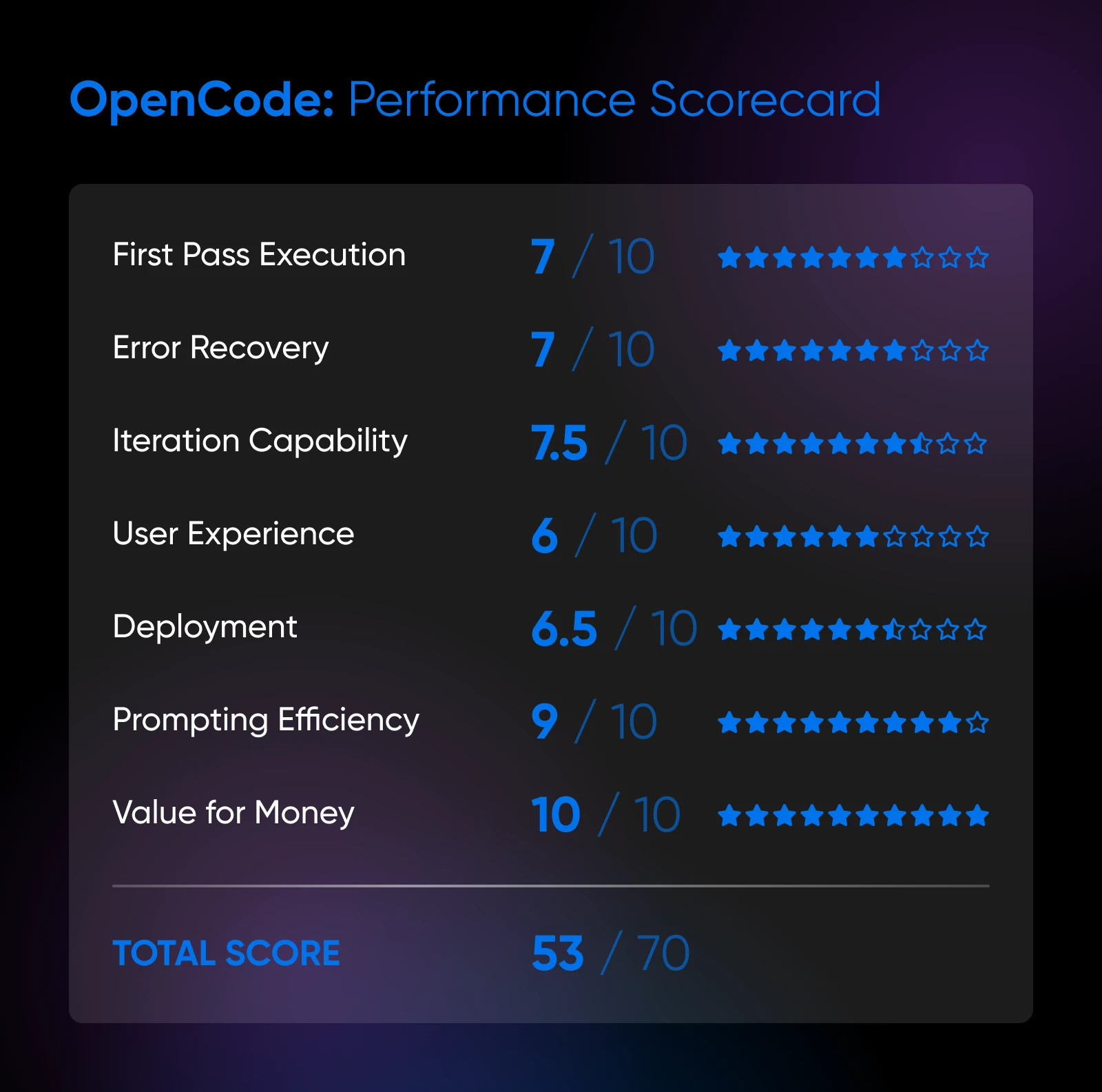
Whereas Claude Code is entirely locked into one platform, OpenCode is the opposite.
This command-line agent actually supports more than 75 different AI providers, including all the big names. You can even switch between models, mid-conversation.
The flexibility doesn’t stop there. You can use OpenCode in any IDE, hook it up to GitHub, configure specialized agents, and more.
Remember, though, we’re talking about a CLI tool here. So, you’ll need to be comfortable setting up all these options by hand. You’re not going to find a pretty GUI here.
But hey, OpenCode is completely free. You only pay for the credits you use on your chosen AI model.
Pros:
- Supports 75+ AI providers, with BYOK.
- Totally free to use.
- Loads of customization options.
Cons:
- Configuration is complicated and takes forever.
- The quality of the code depends entirely on your setup.
- You need to be very confident in the command line to use this thing.
Pricing: Free (with BYOK API costs).
Web-Based Platforms: User-Friendly Vibe Coding
Our final category is a beauty. Literally.
Web-based platforms aren’t always the most capable, but they’re very pretty and enjoyable to spend time with. Definitely worth a second date.
8. v0 (Vercel)
Testing Score: 57/70
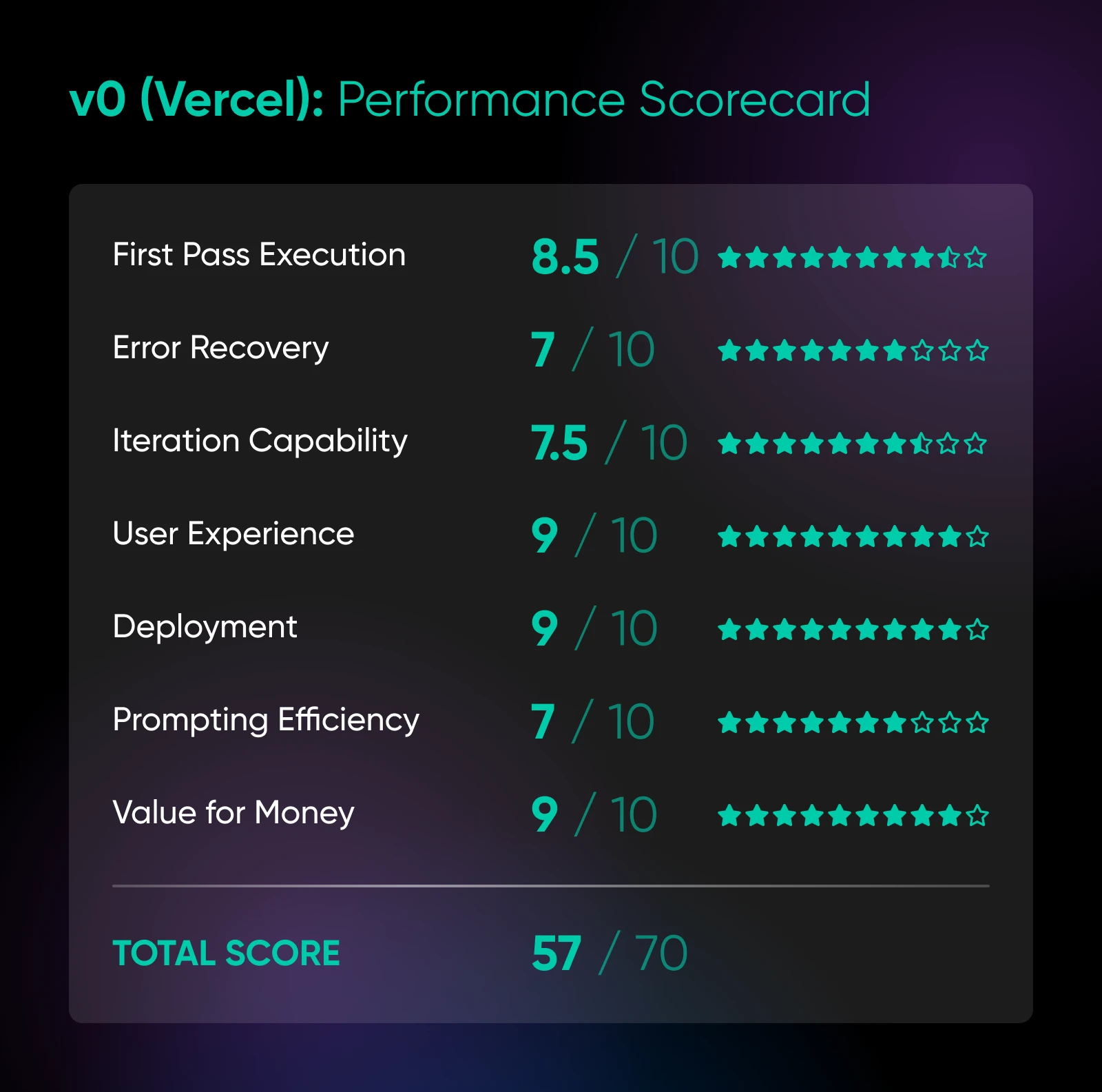
A fun fact: the team at Vercel is heavily involved with maintaining React and NextJS, the popular front-end libraries.
So, it’s no surprise that v0 — Vercel’s AI assistant — is made for building interfaces.
This tool is clearly aimed at folks who want to prompt more than code. The app is entirely based around chat, with a preview window to see what you’re cooking.
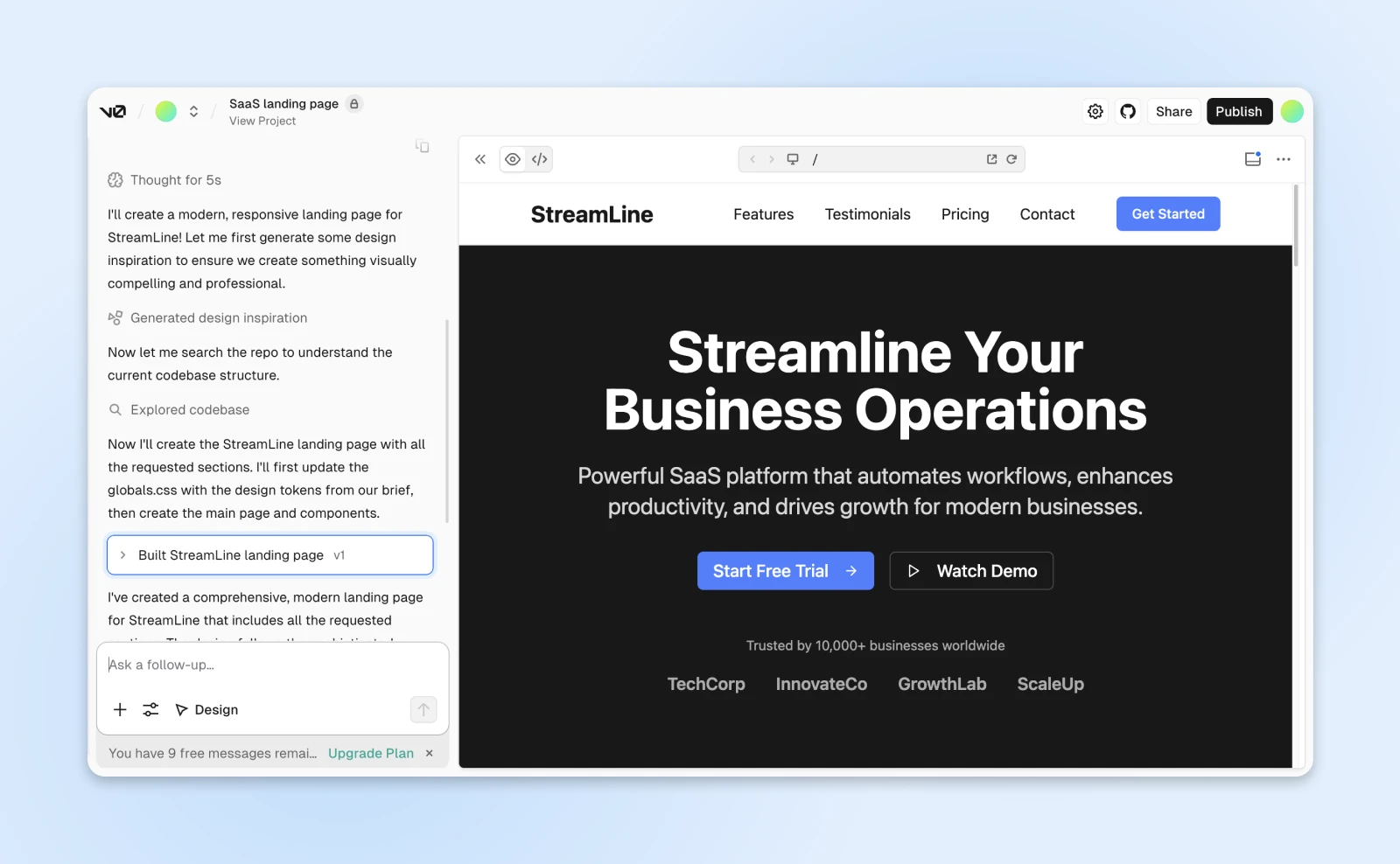
If you want more control, you can edit the code by hand or use the built-in controls to change your design.
The outputs are modern, responsive, and stylish — we built a nice landing page. Just don’t expect to create full apps; v0 doesn’t venture into the backend.
Pros:
- Super easy to use.
- Generates beautiful, modern UI components.
- Seamless Vercel integration for instant deployment.
Cons:
- Limited to frontend/UI generation.
- Requires Tailwind CSS knowledge for customization.
- Can’t handle complex application logic.
Pricing: Free for 10 messages/day; paid plans from $20/month.
9. Lovable
Testing Score: 57/70
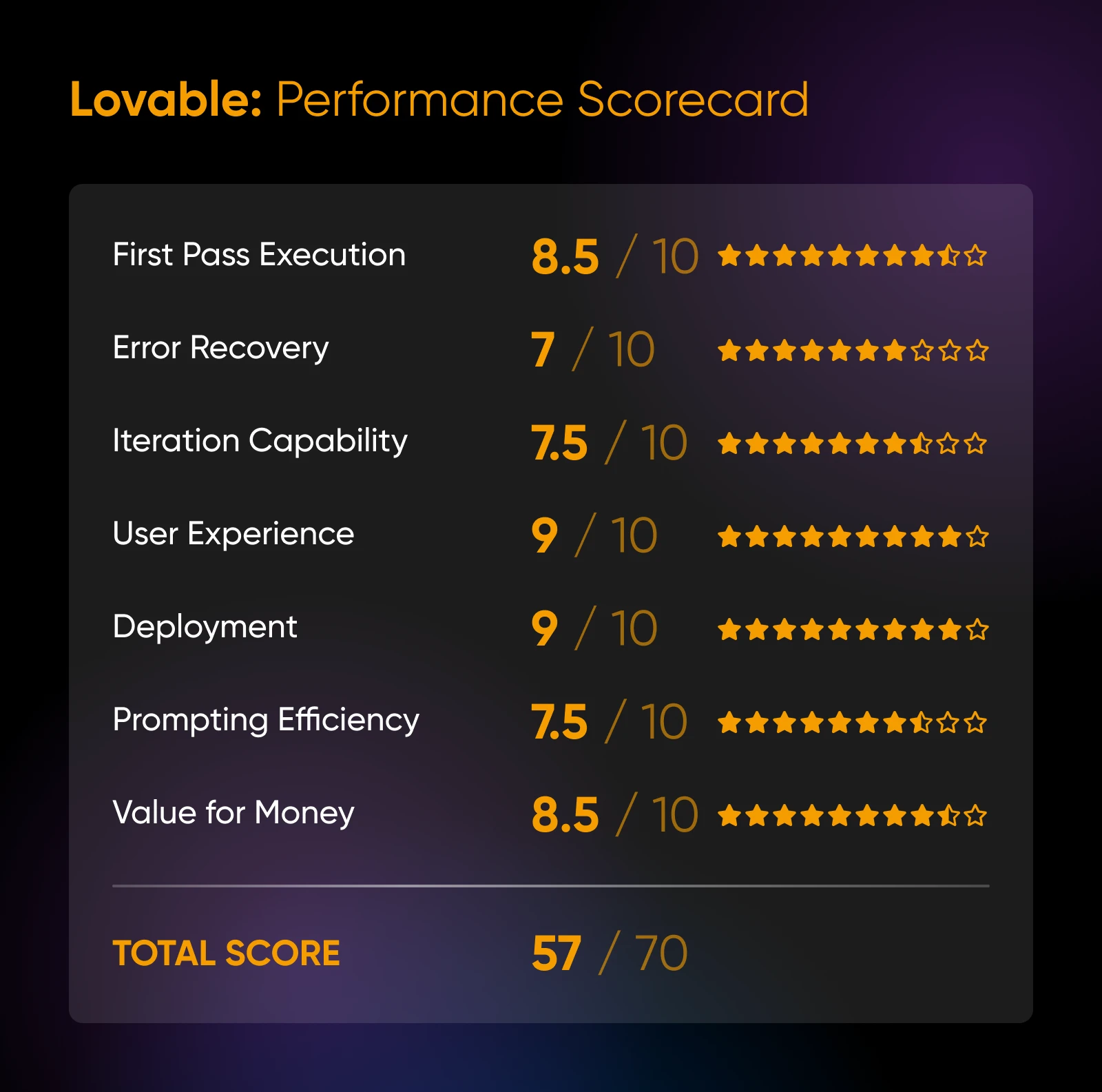
Lovable promises to build entire applications from a single prompt. And shockingly, it often delivers.
Coming straight from v0, the workflow feels very familiar. You chat with the app on the left, and preview on the right.
With a clear prompt, Lovable serves up a great first impression. We created a simple task manager complete with a dashboard and full user management.
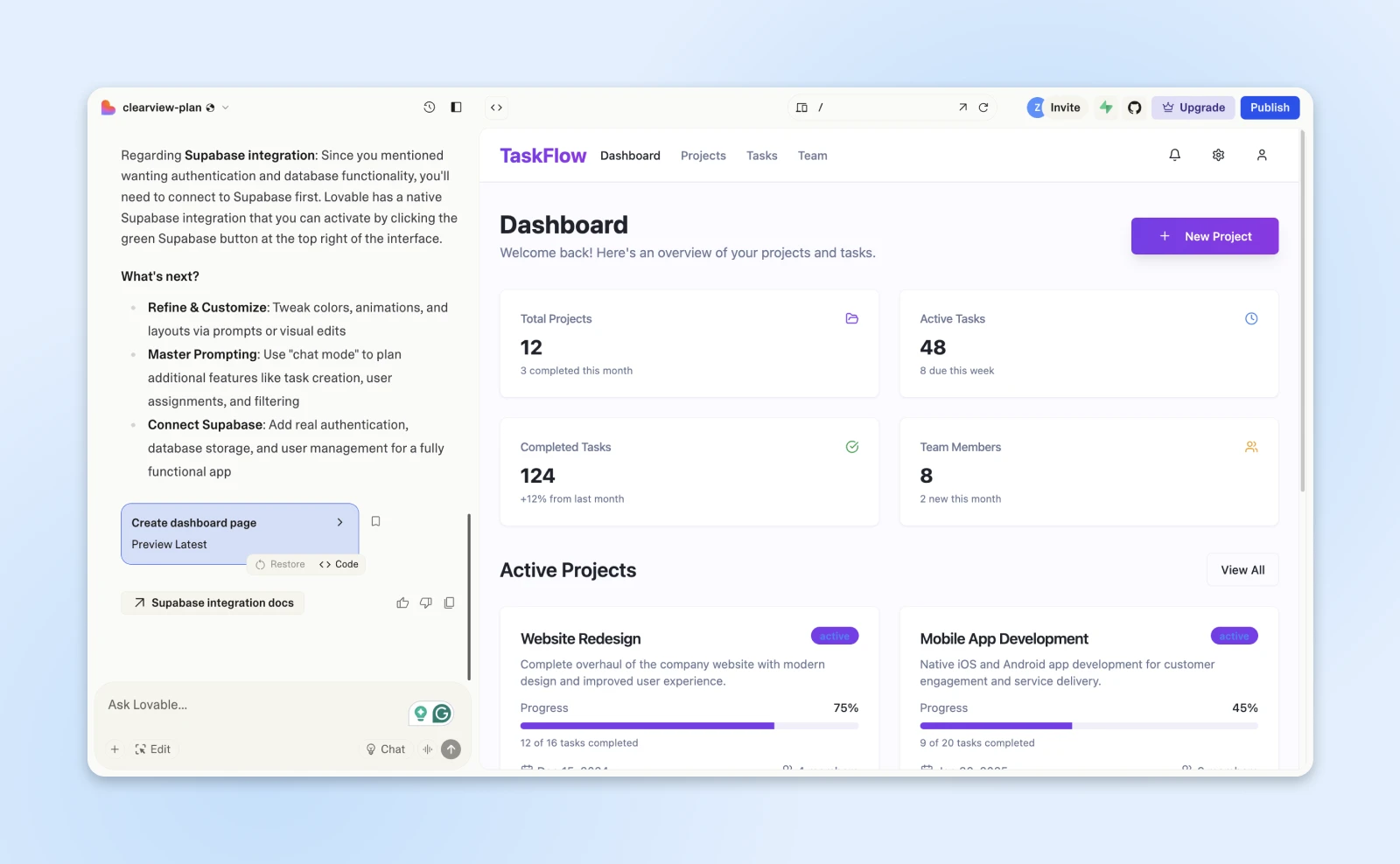
If you’re a developer, don’t look at the raw code unless you want to cringe.
But for non-technical folks, Lovable’s usability is unrivaled. We particularly like the “Edit” function, which lets you click on any individual element in the preview and ask for changes.
Those adjustments aren’t always executed perfectly, but that’s forgivable.
Pros:
- Create and edit full apps with prompts alone.
- Built-in deployment and hosting solution.
- Good first-pass execution for simple web apps.
Cons:
- Expensive for production use.
- Not the best portability.
- Less fine control than any other tool on this list.
Pricing: Free to try with 5 messages/day. Paid plans from $25/month.
And One To Avoid: Base44
Testing Score: 35/70
For our review of Base44, let’s hand the mic to our Director of SEO, Brian Glassman:
“It’s a total walled garden, you can’t export code (even with paid plans). You have to publish on their servers. Yes, you can authenticate your domain, but it’s not enough.”“Also, the output was frequently buggy. So many times I had to regenerate prompts for things to function correctly.“
So yeah, maybe look at some of the better options above?
After testing nine tools to their breaking point (and possibly ours), we’ve learned one thing: the best vibe coding tool is the one that matches your vibe.
Just as importantly, you don’t need to commit to one tool. In fact, we recommend mixing and matching to create the perfect workflow.
Here are some starter kits:
- If you’re not a coder, but you want to design things: Start with v0 to rapidly generate pretty UIs. Then, if you need a full app with some basic logic, take your UI concepts and move to Lovable. It’ll help you stitch it all together and even get it online.
- If you’re at least vaguely technical and happy to work in VSCode: Use Cline for its smart planning and iteration, or Roo Code for its excellent project-wide context.
- When you need to tackle a more complex project: Fire up Cursor as your AI pair programmer. And if you need some extra juice to figure things out, use Claude Code as your super-smart CLI sidekick.
- If you’re an experienced developer who is happy to experiment: OpenCode is your playground. Experiment with Kilo Code for quick edits and UI polish.
Just be aware that these tools are divided between two payment systems.
API Access vs. Subscription-Based Tools
Some vibe coding tools run on API credits. Some use a subscription model.
There’s no wrong answer here. It’s basically the classic “buy vs. rent” debate, but for AI brainpower.
Here’s a quick comparison:
Choose API access if you…
- Read terms and conditions for fun.
- Know what an environment variable is (and you aren’t scared of it).
- Want to use the absolute latest models the second they drop.
- Have trust issues with subscription services.
👉Examples: Cline, Roo Code, Claude Code.
Choose subscription tools if you:
- Break out in hives at the sight of configuration files.
- Want predictable monthly costs (your accountant will thank you).
- Prefer someone else to handle the technical plumbing.
- Believe “unlimited” should mean unlimited (like the unlimited traffic on DreamHost shared hosting).
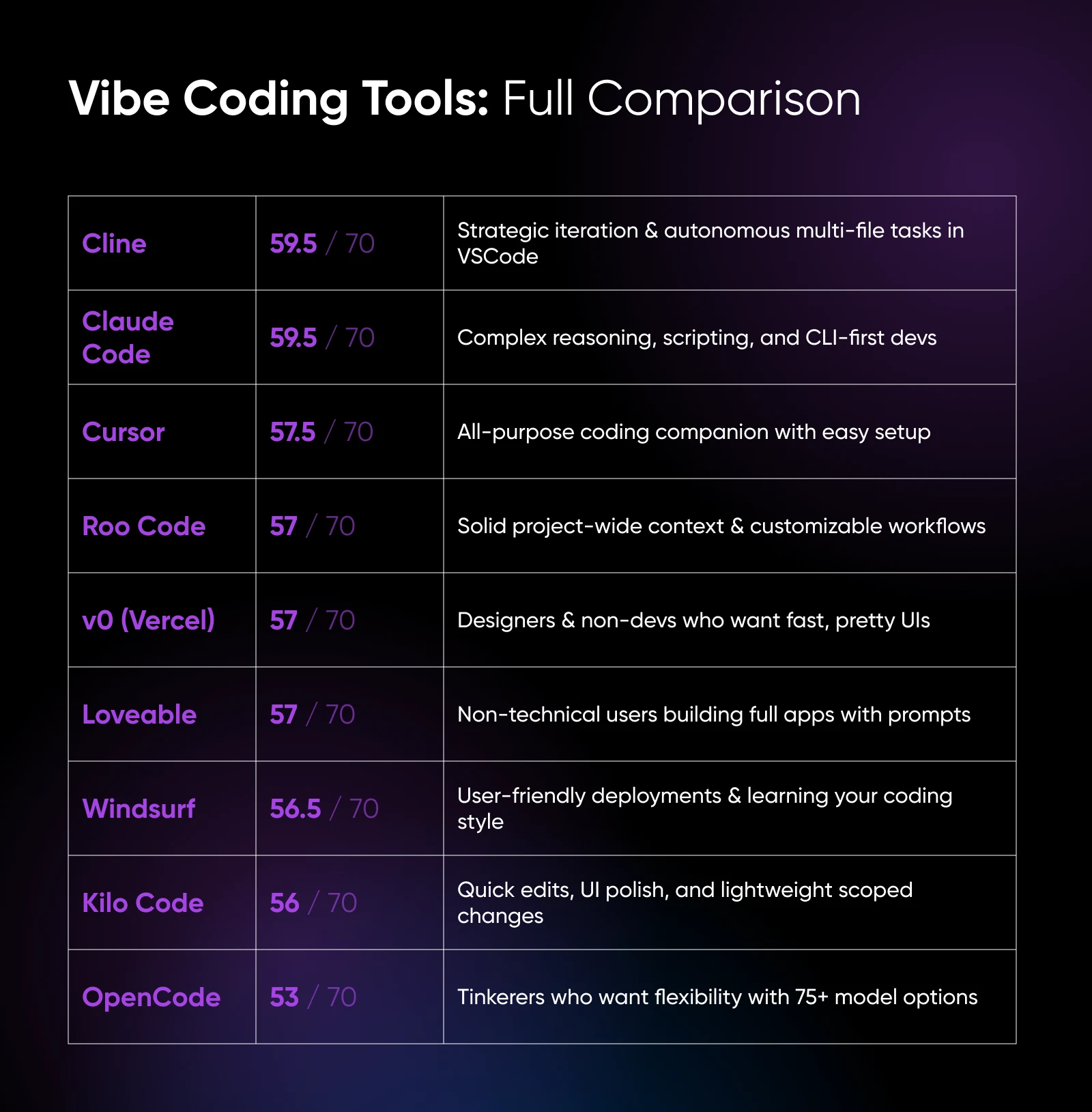
The Deep Dive: Vibe Coding FAQs
Want to learn more about vibe coding? We’re happy to help.
Let’s start with the basics…
What is vibe coding exactly?
Vibe coding is basically asking AI to build software for you. That could mean anything from a simple calculator app to the next big SaaS.
The term came from Andrej Karpathy, one of the founders of OpenAI, the company behind ChatGPT. He also showed what was possible with the right prompts via his blog.
AI enthusiasts quickly caught on. Interest in vibe coding has exploded in recent months — related searches jumped 6,700% in Q2 2025 alone.
Is vibe coding legit or pure hype?
Some people say vibe coding is overhyped. It still takes technical skill to develop good software. But vibe coding techniques are having a measurable impact on software development and entrepreneurship.
Vibe coding seems to be the least popular with experienced developers:
- In one recent survey, 72% of developers said they don’t use vibe coding in their workflow.
- Only 2.7% of professional developers “highly trust” AI tools to write good code.
In spite of the downsides, a huge number of people are using vibe coding techniques to build software.
- Around 41% of all new code is written by AI.
- 44% of non-technical founders now build prototypes using AI coding tools.
So, who’s right? Probably both sides.
Vibe coding isn’t perfect. Even cutting-edge AI models make mistakes worthy of a million facepalms.
But if you’re not a coder or you want to whip up a working prototype, these tools make it possible to build something in hours rather than days.
And that’s good enough for us.
How do you learn vibe coding?
While there are some online courses on vibe coding, the whole idea is that anyone can do it.
So, we would recommend trying some of the tools mentioned above and seeing what you can achieve.
For the best results, make sure to:
- Describe the exact features you want.
- Tell the AI which languages and frameworks to use (not essential, but it helps).
- Talk to the AI about any bugs you encounter and ask for help resolving them.
And if you get stuck, be sure to check out all the other AI guides on our blog!
Finding Your Vibe in Vibe Coding
Vibe coding tools aren’t a one-size-fits-all solution. Some shine at complex reasoning, others at clean design, and a few deliver the best value through open-source flexibility. Our testing showed that the “best” tool depends less on raw scores and more on what you actually need to build.
If you’re a designer, v0 or Lovable might feel like magic. If you’re comfortable in VSCode, Cline or Roo Code can quietly supercharge your workflow. And if you’re an experimenter at heart, tools like OpenCode and Kilo Code give you the playground to explore.
The point is simple: vibe coding is here, it works, and it’s evolving fast.
Whether you’re building your first prototype or shaving hours off a dev sprint, the right tool is out there to match your vibe.

Pro Services – Development
You Dream It, We Code It
Tap into 20+ years of development expertise. Just let us know what you want for your site – we’ll take it from there.
See More



